Angevin Empire Worksheets
Do you want to save dozens of hours in time? Get your evenings and weekends back? Be able to teach about the Angevin Empire to your students?
Our worksheet bundle includes a fact file and printable worksheets and student activities. Perfect for both the classroom and homeschooling!
Resource Examples
Click any of the example images below to view a larger version.
Fact File
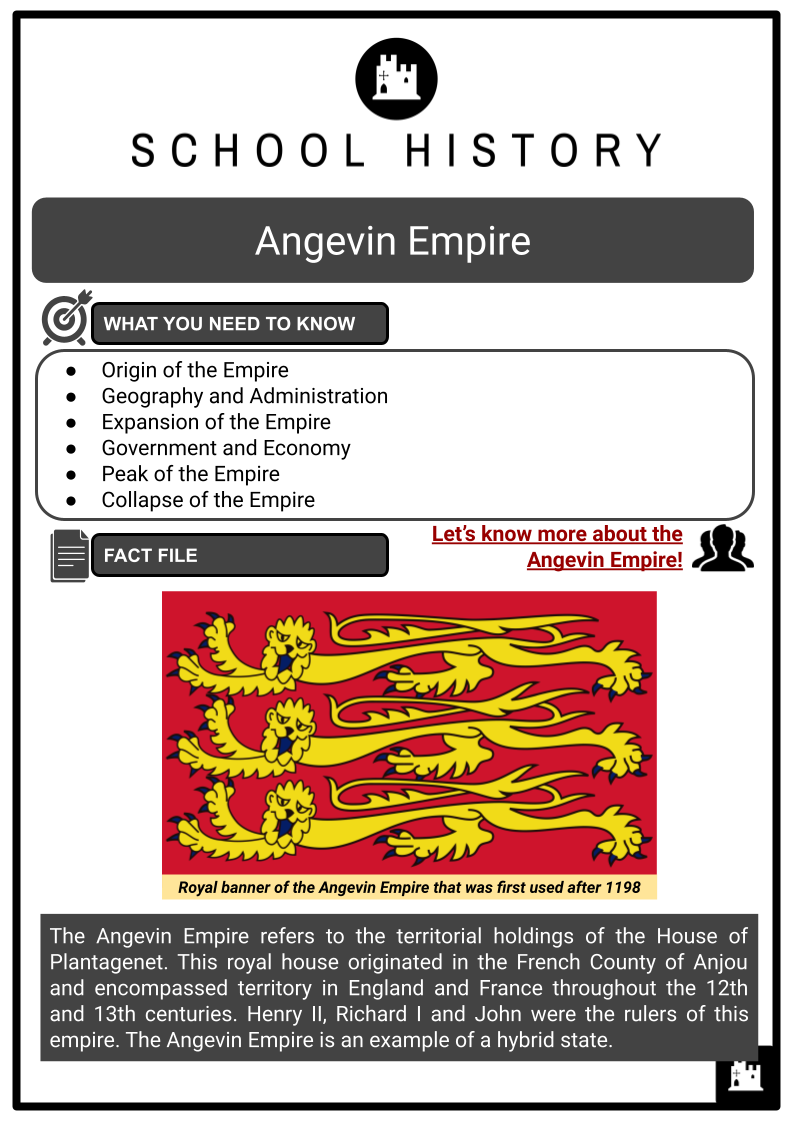
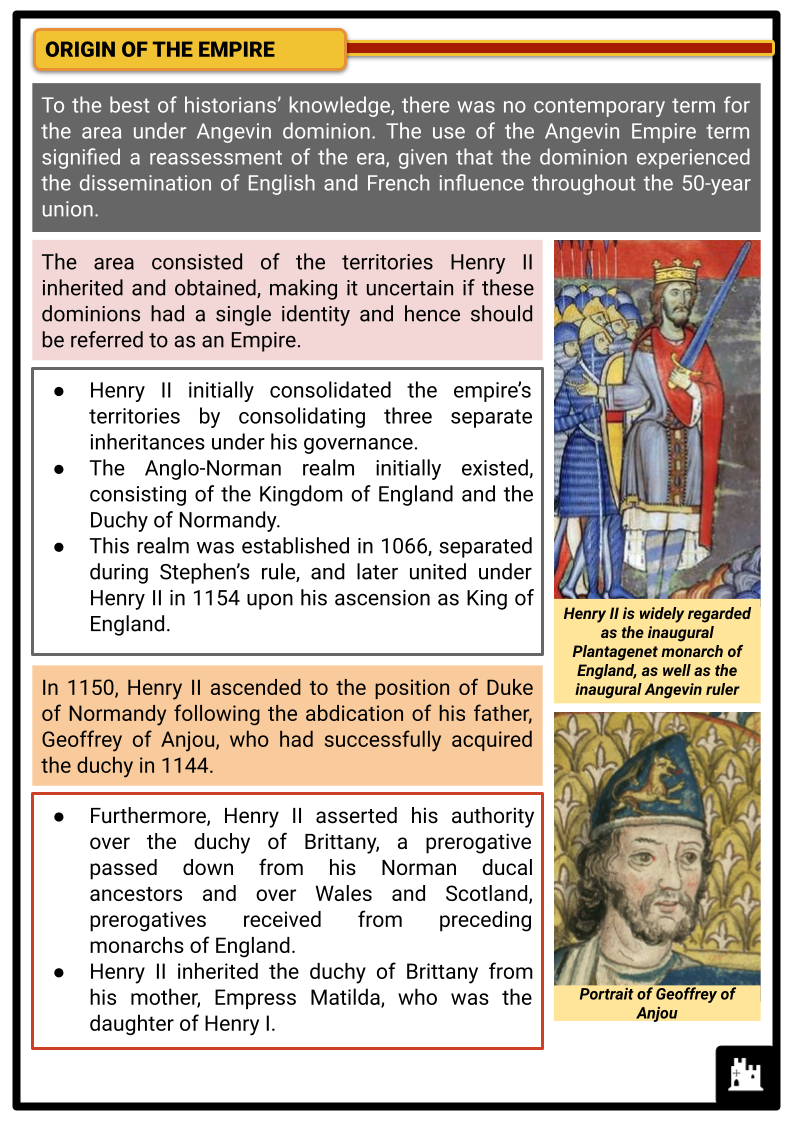
Student Activities
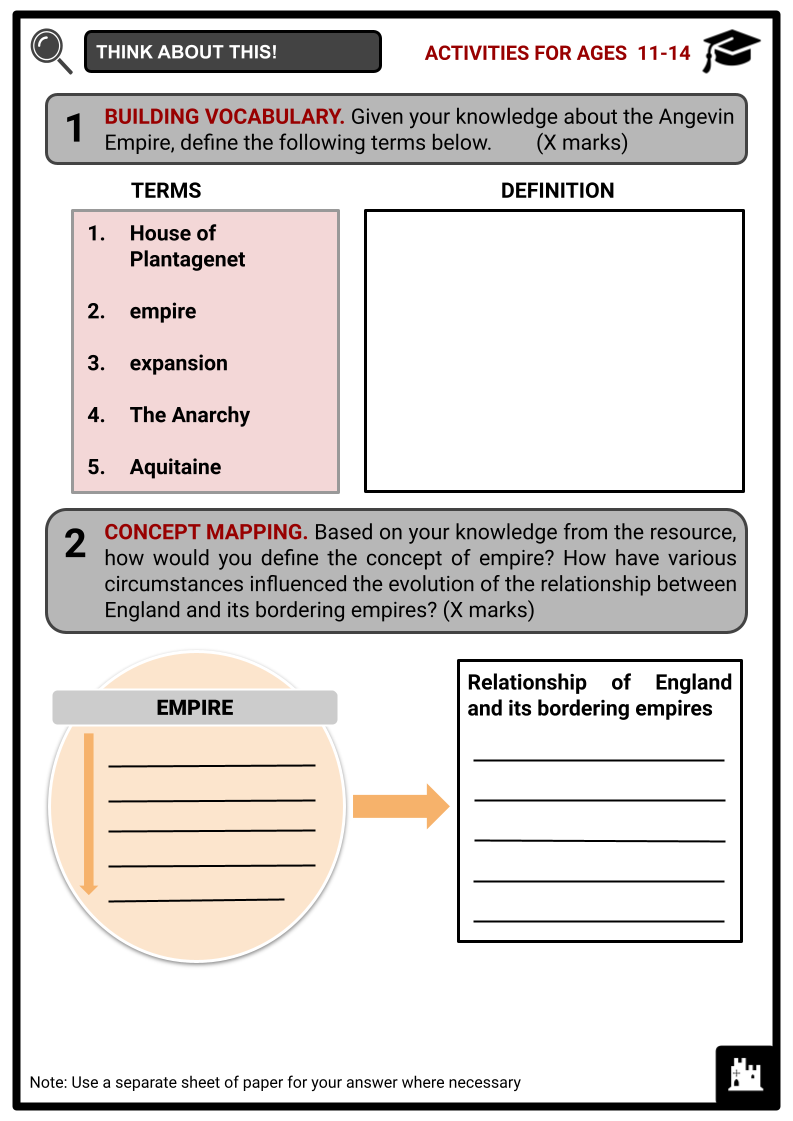
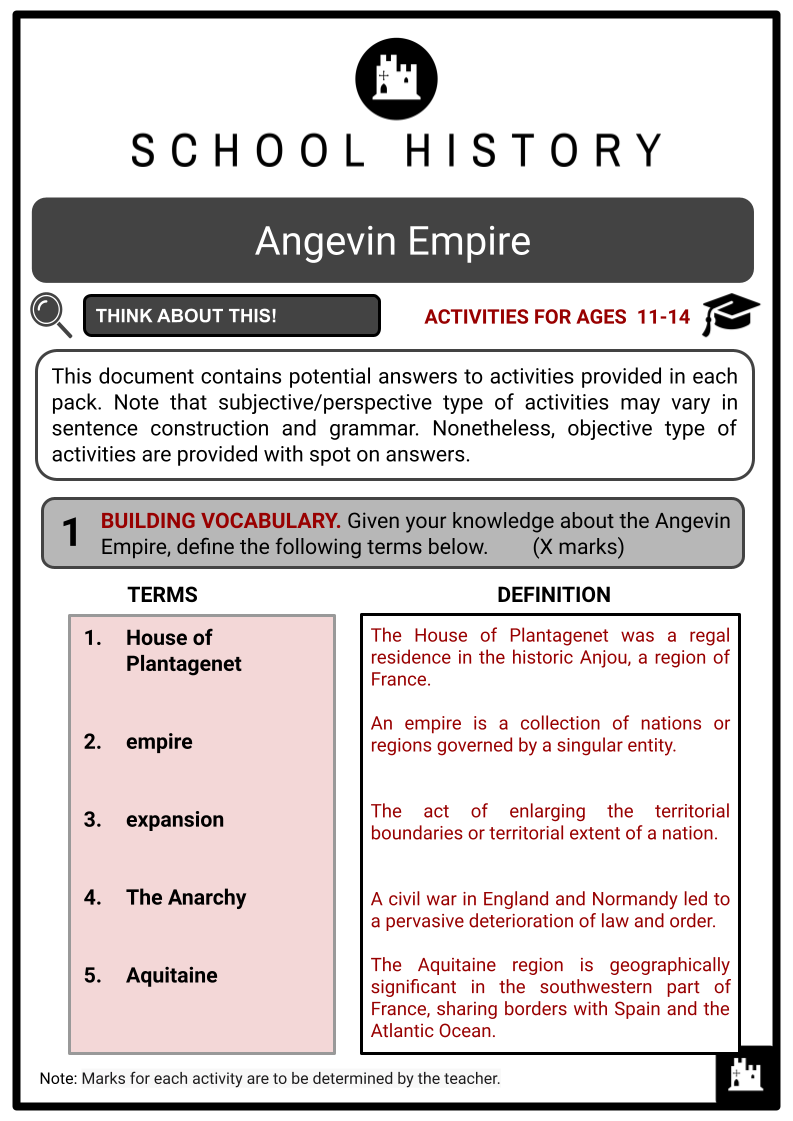
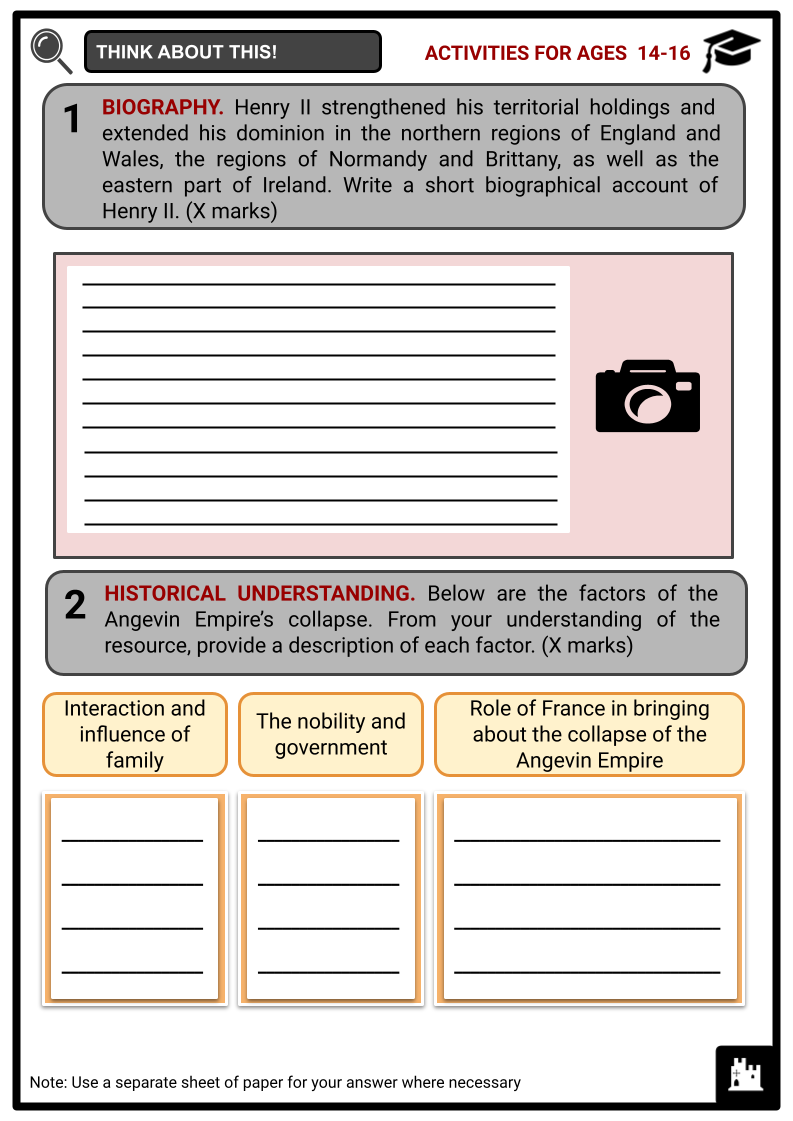
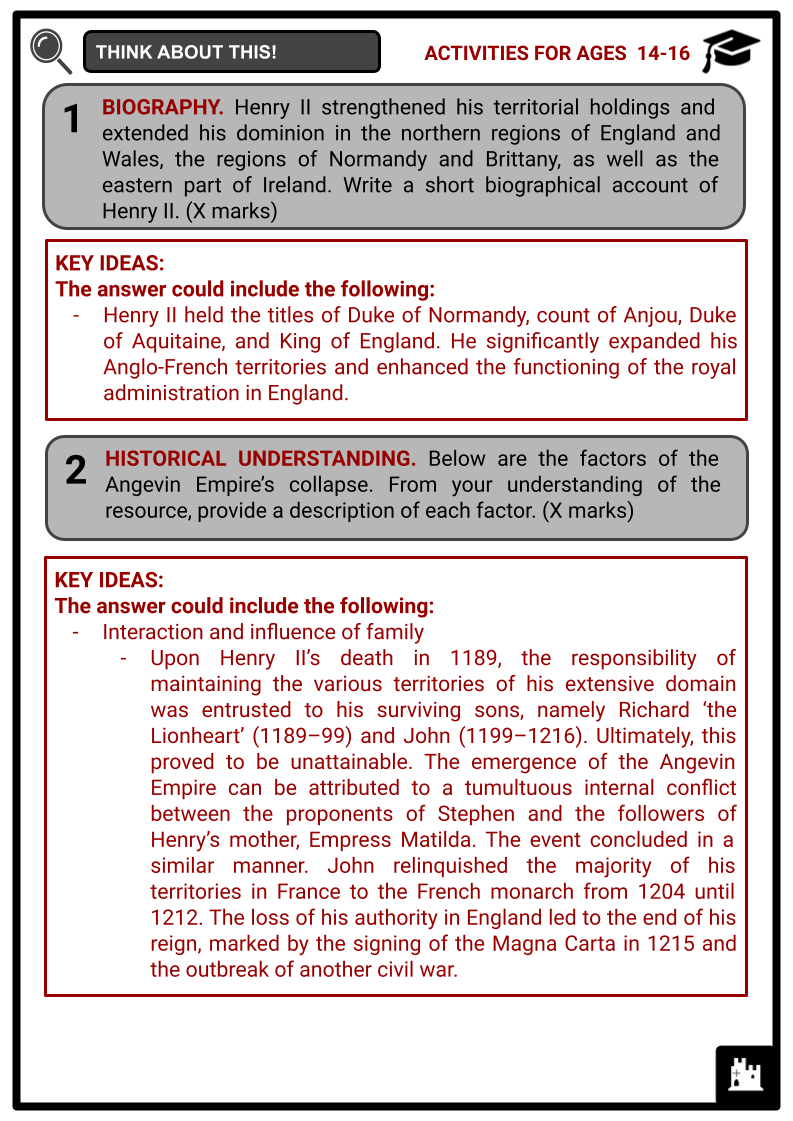
Summary
- Origin of the Empire
- Geography and Administration
- Expansion of the Empire
- Government and Economy
- Peak of the Empire
- Collapse of the Empire
Key Facts And Information
Let’s know more about the Angevin Empire!
The Angevin Empire refers to the territorial holdings of the House of Plantagenet. This royal house originated in the French County of Anjou and encompassed territory in England and France throughout the 12th and 13th centuries. Henry II, Richard I and John were the rulers of this empire. The Angevin Empire is an example of a hybrid state.
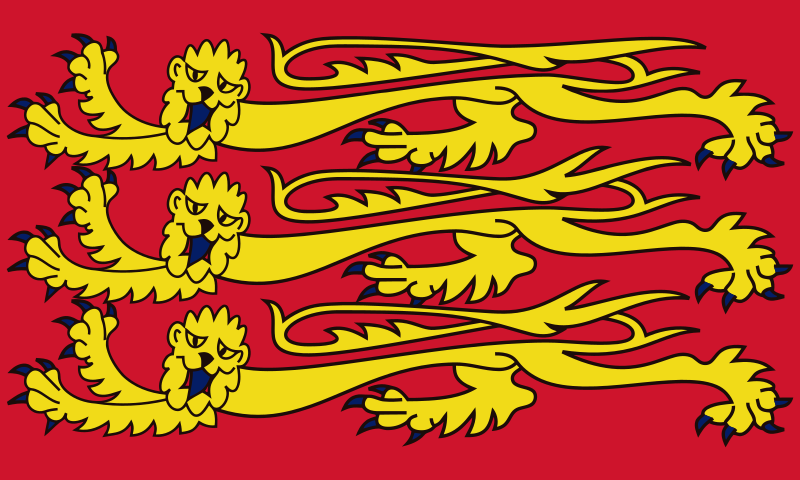
ORIGIN OF THE EMPIRE
- To the best of historians’ knowledge, there was no contemporary term for the area under Angevin dominion. The use of the Angevin Empire term signified a reassessment of the era, given that the dominion experienced the dissemination of English and French influence throughout the 50-year union.
- The area consisted of the territories Henry II inherited and obtained, making it uncertain if these dominions had a single identity and hence should be referred to as an Empire.
- Henry II initially consolidated the empire’s territories by consolidating three separate inheritances under his governance.
- The Anglo-Norman realm initially existed, consisting of the Kingdom of England and the Duchy of Normandy.
- This realm was established in 1066, separated during Stephen’s rule, and later united under Henry II in 1154 upon his ascension as King of England.
- In 1150, Henry II ascended to the position of Duke of Normandy following the abdication of his father, Geoffrey of Anjou, who had successfully acquired the duchy in 1144.
- Furthermore, Henry II asserted his authority over the duchy of Brittany, a prerogative passed down from his Norman ducal ancestors and over Wales and Scotland, prerogatives received from preceding monarchs of England.
- Henry II inherited the duchy of Brittany from his mother, Empress Matilda, who was the daughter of Henry I.
- The county of Anjou, along with the counties of Maine and Touraine, which are commonly referred to as Greater Anjou, was inherited by Henry II from his father, resulting in the establishment of the Angevin Empire. Furthermore, it is worth noting that Aquitaine, a territory under the rule of Eleanor of Aquitaine, was bestowed upon Henry II as his prince consort after their union in 1152.
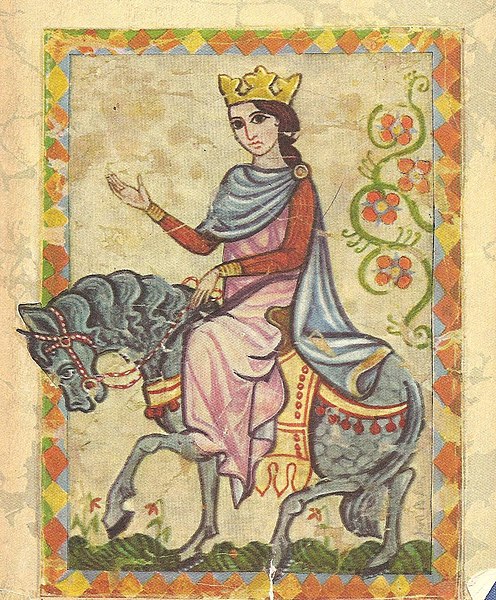
- The central region of the Aquitaine comprised Poitou and Gascony, along with numerous additional lordships over which the dukes of Aquitaine asserted their authority.
- Ireland came under the influence of the Angevins after Henry’s invasion in 1171–1172. Henry, consequently, held the title of lord over a large expanse of the area extending from the Pyrenees to Scotland, thereby establishing himself as the preeminent sovereign in the western region of Europe during that era.
- The origins of the empire have been extensively debated. Arguments on whether Henry’s opportunism played a vital role in the outcome or it was mostly influenced by genealogical chance and fortunate development arose. Additionally, it was widely debated if Henry’s dynastic ancestors were involved in the deliberate planning of the long-term merger of the three inheritances.
GEOGRAPHY AND ADMINISTRATION
- At its peak, the Angevin Empire encompassed the Kingdom of England, the duchies of Normandy (including the Channel Islands), Gascony and Aquitaine, as well as the counties of Anjou, Poitou, Maine, Touraine, Saintonge, La Marche, Périgord, Limousin, Nantes and Quercy.
- The Plantagenets exerted varying degrees of vassalage to the king of France over the duchies and counties. Nevertheless, despite the absence of official affiliation with the empire, the Duchies of Brittany and Cornwall, the Welsh princedoms, the county of Toulouse and the Kingdom of Scotland were subject to varied degrees of governance.
- During the reigns of Henry II and Richard I, Auvergne was Duke of Aquitaine, included within the empire. Henry II and Richard I made additional assertions regarding the County of Berry, although these assertions were not fully realised.
- Consequently, the county was ultimately relinquished upon the succession of John in 1199.
- The boundaries of the Angevin Empire were occasionally widely recognised and hence easily identifiable, such as the dykes built between the royal demesne of the king of France and the Duchy of Normandy. In many regions, such as the eastern border of Aquitaine, the demarcation between the territory claimed by Henry II, and later Richard I, and the border where their authority ceased was not as distinct.
- Following a catastrophic war led by William the Lion, English garrisons were installed in the castles of Edinburgh, Jedburgh, Roxburgh and Berwick in southern Scotland, as specified in the Treaty of Falaise.
- Previous to this, Scotland was an autonomous nation.
EXPANSIONS OF THE EMPIRE
- During the initial years of his rule, Henry II acquired additional territories and focused on establishing a network of subordinate nations as protective barriers, particularly around England and Normandy. The primary regions for expansion, where significant territorial claims were established, were Scotland, Wales, Brittany and Flanders, which served as an ally rather than a new dominion.
- King David I of Scotland strategically capitalised on The Anarchy, a civil war in England and Normandy between 1138 and 1153, to acquire control over the regions of Cumberland, Westmorland and Northumberland. Significant figures such as Rhys of Deheubarth and Owain Gwynedd had arisen in Wales.
- No substantiated evidence in Brittany suggests that Eudes II, the Duke of Brittany, acknowledged the Norman overlordship.
- Geoffrey Plantagenet had never regained control of two crucial frontier fortresses, Moulins-la-Marche and Bonsmoulins, which were now under the control of Robert of Dreux. In 1153, Count Thierry of Flanders became a member of the alliance established by Louis VII. Amboise was acquired by the Count of Blois in the southern region. From the standpoint of Henry II, it was imperative to address these geographical matters.
GOVERNMENT AND ECONOMY
- In contrast to direct administration by the ruling monarch, the Angevin Empire employed a system wherein power was delegated to specifically designated subjects in several domains. These subjects possessed diverse political and military powers.
England
-
- England exerted the most robust dominion over all the territories within the Angevin Empire, mostly because of the advanced age of the governing positions and the established traditions and customs. England was geographically partitioned into shires, with sheriffs assigned to each shire to uphold the common law. When the king was absent on the continent, the monarch designated a justiciar to assume his duties. Due to their frequent presence in France, the kings of England exhibited a higher frequency of writ usage than their Anglo-Saxon counterparts, yielding advantageous outcomes for England.
Ireland
-
- Ireland was governed by the Lord of Ireland, who first encountered significant challenges in enforcing his authority. Angevin strongholds were established in Dublin and Leinster, and Anglo-Norman nobility acquired control over Cork, Limerick and certain regions of eastern Ulster.
France
-
- The Angevin monarchs managed all the continental domains through a hierarchical system, with a seneschal at the apex, and subordinate government officials included baillis, vicomtes and prévôts. Nevertheless, there would be variations among all counties and duchies. The contemporary term Greater Anjou encompasses the geographical region comprising Anjou, Maine, Touraine, Vendôme and Saintonge. Prévôts, the seneschal of Anjou and other seneschals, held governance in this region. The individuals in question were situated in various locations, including Tours, Chinon, Baugé, Beaufort, Brissac, Angers, Saumur, Loudun, Loches, Langeais and Montbazon.
- The economic landscape of the Angevin Empire was characterised by complexity, mostly stemming from the diverse political structures inherent in its various fiefdoms. England and Normandy were effectively governed, enabling them to generate greater profits compared to regions like Aquitaine. This is because England and Normandy had more officials available to collect tax payments.
- In contrast to Aquitaine, local lords did not have the ability to create their coinage. As a result, the Angevin monarchs could exert control over the economy from their administrative centre in Chinon.
- The significance of Chinon was demonstrated by Richard’s appropriation of Chinon initially in 1187 when he defied his father and subsequently when John promptly migrated to Chinon upon his brother’s demise. The funds generated in England were primarily allocated to continental matters.
- However, John Gillingham, a mediaeval history Professor, contends that the relatively lower revenue generated by regions such as Normandy, Anjou and Aquitaine compared to England can be attributed to inadequate financial records for these continental territories.
- The English revenues exhibited year-to-year fluctuations. From 1155 to 1156, the financial records indicate that England’s annual income amounted to £10,500, approximately half of the revenue generated during Henry I’s reign.
- The decrease in royal authority can be attributed, at least in part, to the presence of The Anarchy and King Stephen’s lenient governance.
- In Ireland, the revenue for 1212 was quite modest, amounting to £2,000. However, it is worth noting that no other records were preserved. The Duchy of Normandy had numerous variations in its political landscape. In 1180, the Norman income amounted to a mere £6,750. However, by 1198, they had surged to £25,000 annually, surpassing the revenues of England.
PEAK OF THE EMPIRE
- The assaults on Toulouse unequivocally demonstrated that the peace agreement between Louis VII and Henry II was not truly peaceful but rather a pretext for Henry to engage in conflict abroad. Louis found himself in a precarious situation: his subject, Henry, held significantly more authority than him, and Louis lacked a male successor.
- In 1160, Constance, Henry II’s second wife, passed away during childbirth. Louis VII promptly declared his intention to remarry with Adèle of Champagne, as there was an urgent requirement for a male successor.
- Henry II’s son, Henry, who was only two years old then, was ultimately wedded to Margaret due to his influence.
- In 1158, it was officially announced that the Norman Vexin was given to Henry as Margaret’s dowry. If Louis VII had passed away without a male successor, Henry would have emerged as a formidable contender for the French crown.
- Louis encountered a perilous ally in Archbishop Thomas Becket in 1164. Louis and Becket had already encountered one other in 1158, but the situation had changed. France had already taken in a few clergy refugees, and Louis was referred to as Rex Christianissimus, which means most Christian monarch.
- In 1167, Henry II initiated a military campaign in Auvergne, followed by an assault on Bourges in 1170. Louis VII responded by initiating a military campaign in the Norman Vexin, compelling Henry II to relocate his forces towards the northern region, thus allowing Louis to liberate Bourges.
- In contrast to the connotations associated with the term Angevin Empire, Henry II did not regard his domains as a unified empire. Instead, he regarded them as private and individual properties that he intended to allocate among his offspring.
- In 1170, Henry, commonly called ‘The Young King’, was bestowed the title of King of England despite not having a reign. Subsequently, Richard assumed the Duke of Aquitaine in 1172, Geoffrey became the Duke of Brittany in 1181, and John was appointed Lord of Ireland in 1185.
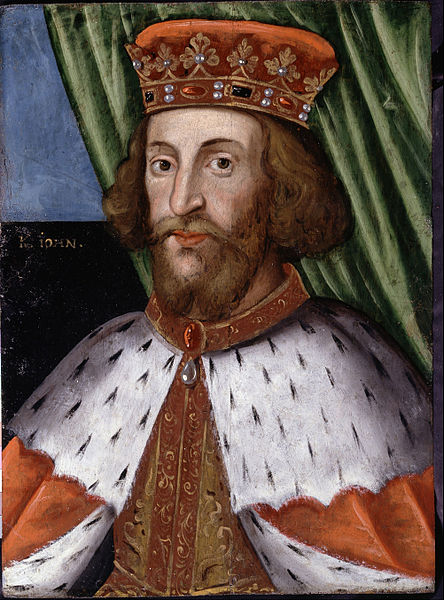
- During the campaign against Toulouse in 1170, Eleanor was pledged to Alfonso VII, with Gascony serving as her dowry.
- The division of the territories among his offspring posed a significant challenge to his authority, as it enabled them to independently finance their endeavours using their estates and potentially challenge their father’s authority inside their various domains.
COLLAPSE OF THE EMPIRE
- Due to Richard’s death without an heir, the throne was inherited by John. John encountered significant resistance from his 12-year-old nephew, Arthur of Brittany, who happened to be Geoffrey’s son. In 1199, Philip II exhibited a natural inclination to support young Arthur in his opposition to John. Additionally, he gained homage from the king’s nephew in exchange for the territories of Maine, Anjou and Touraine.
- Philip’s enhanced bargaining power enabled him to negotiate with John, resulting in the signing of the Treaty of Le Goulet in 1200.
- This treaty effectively resolved the territorial claims of the Angevin rulers over the French provinces, except Aquitaine, thereby ending the ongoing conflict about Normandy.
- Nevertheless, in 1202, Philip launched an assault on Normandy, and Arthur launched an offensive on Poitou.
- At the beginning of 1203, Arthur had enigmatically vanished, most likely as a result of John’s deliberate murder. John’s departure from Normandy in late 1203 was a catastrophic error, and Philip capitalised on this situation. Rouen, Bayeux, Caen and Falaise all capitulated on 24 June 1204, in dire need of assistance from John, who failed to arrive. Philip had effectively subjugated Normandy by the middle of June. Poitiers was captured in August 1204, and Chinon and Loches were captured the following year.
- The Angevin Empire disintegrated on 27 August 1214 during the Battle of Bouvines. At a certain juncture, Philip II had been dismounted, and the English appeared to be on the verge of triumph. Nevertheless, the French exhibited remarkable courage and emerged triumphant in the decisive clash.
- King John was completely incapacitated. The execution of the Magna Carta, which was the first written document to establish the notion that the monarch and his government were subject to the law, occurred one year after the aforementioned event. During this time, John agreed to surrender a significant portion of his authority to the barons.
- John dissented from the Magna Carta, citing its inherent unfairness to Pope Innocent III. Pope Innocent III concurred with John’s viewpoint and pronounced the document null and void.
- This event ignited a civil war in England, prompting the barons to seek assistance from France. In May 1216, a French military campaign arrived at Dover and advanced to London, where Prince Louis proclaimed himself King Louis I of England, only to be expelled by the Pope. In August 1216, John’s demise occurred abruptly, resulting in the loss of the Angevin Empire.
Frequently Asked Questions
- What was the Angevin Empire?
The Angevin Empire was a medieval political entity that emerged in the 12th century under the rule of the Angevin dynasty. It encompassed territories in Western Europe, primarily England and large parts of France.
- Who were the rulers of the Angevin Empire?
The Angevin Empire was established and ruled by the Angevin dynasty, originating from the House of Anjou in France. The most prominent rulers of the Angevin Empire were Henry II, Richard the Lionheart, and John Lackland.
- What territories were part of the Angevin Empire?
The Angevin Empire included England, Normandy, Anjou, Aquitaine, Gascony, Poitou, Maine, and parts of Wales and Scotland. At its height, it was one of Western Europe's most powerful political entities.
